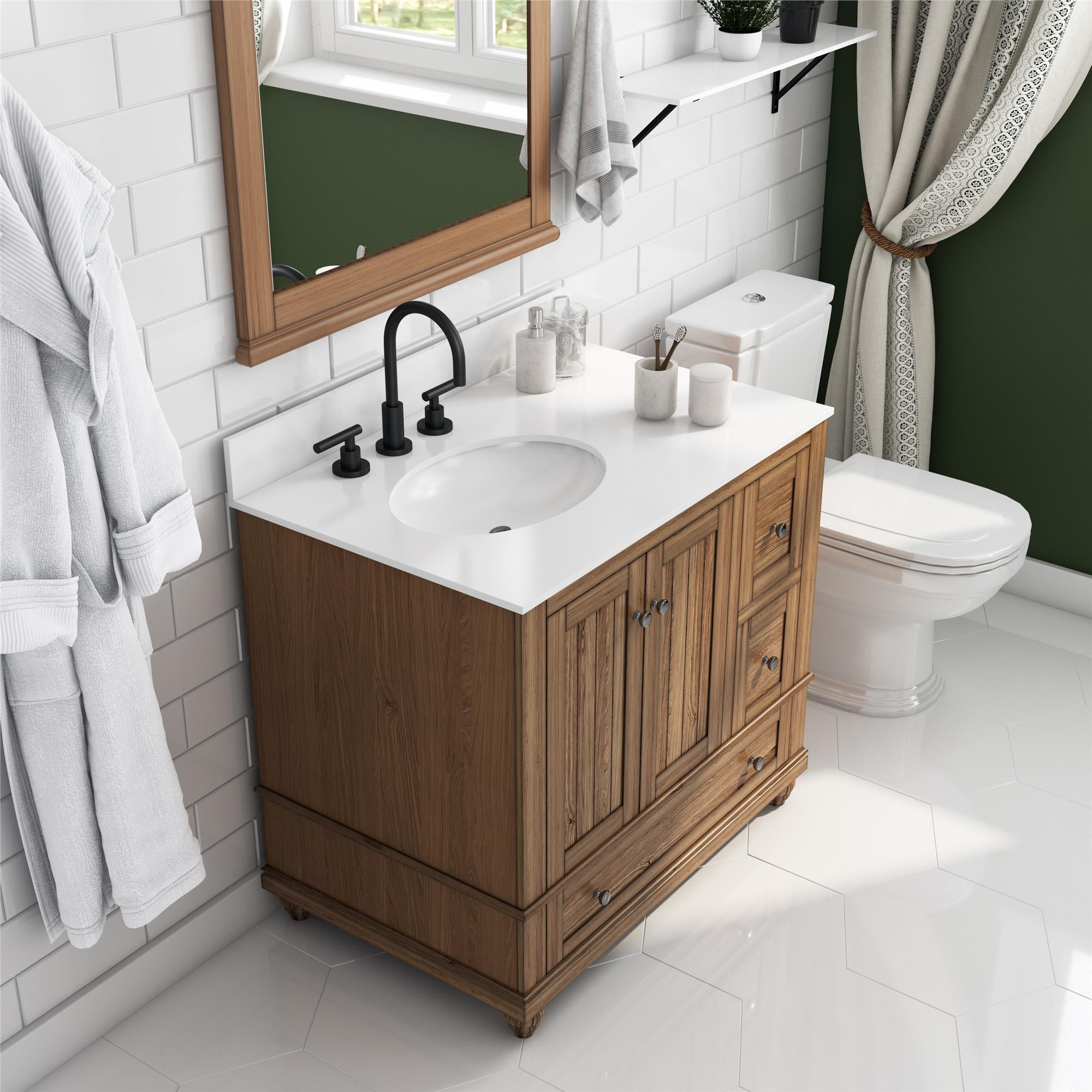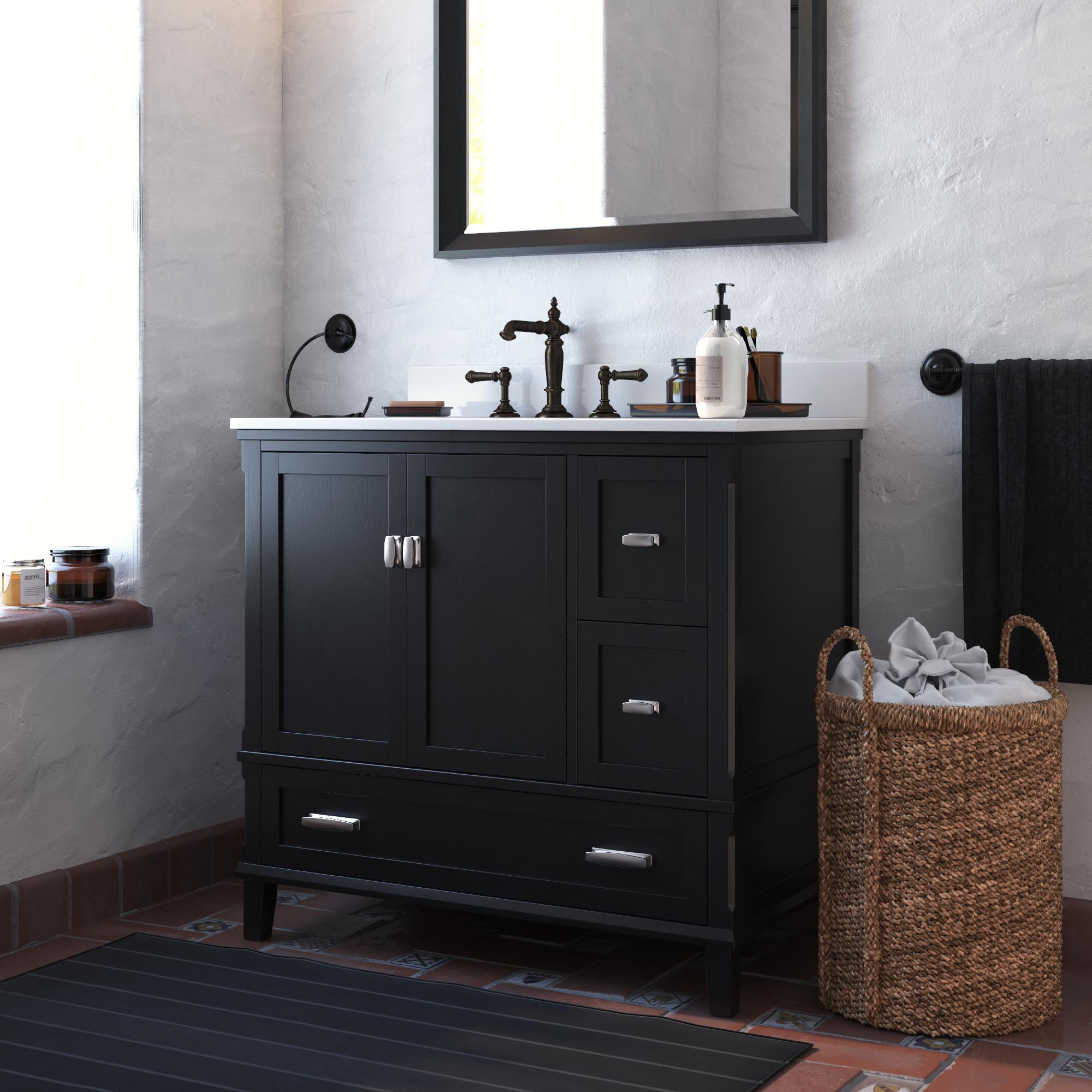Floating Bathroom Vanity 36 Inch: A Style Guide

A floating bathroom vanity, especially a 36-inch model, can be a stylish and practical addition to any bathroom. It offers a sleek, modern look and maximizes space by eliminating bulky legs. This guide will explore the benefits of a floating vanity and how it can complement various bathroom styles.
Space Optimization and Modern Aesthetics
Floating vanities create a sense of openness and spaciousness, especially in smaller bathrooms. The absence of legs visually expands the floor area, making the room feel larger. This is particularly advantageous in a 36-inch vanity, as it provides ample storage while maintaining a streamlined aesthetic.
Design Styles and Features
Floating vanities can seamlessly integrate into diverse bathroom designs. Here are some examples:
- Contemporary: Contemporary floating vanities often feature clean lines, minimalist designs, and sleek materials like polished chrome hardware and high-gloss finishes. They often incorporate open shelving or drawers with integrated handles for a seamless look.
- Traditional: Traditional floating vanities embrace classic elements like ornate details, intricate carvings, and warm wood tones. They may feature decorative legs or feet for a touch of elegance. Think brushed nickel hardware and rich, stained wood finishes.
- Farmhouse: Farmhouse floating vanities often have a rustic charm with reclaimed wood, distressed finishes, and exposed hardware. They may incorporate open shelving for displaying decorative items or practical storage.
Materials and Considerations
The choice of materials for a floating vanity significantly impacts its style, durability, and maintenance. Here’s a breakdown of common materials:
| Material | Advantages | Disadvantages |
|---|---|---|
| Wood | Natural beauty, warmth, durability, can be customized | Higher cost, susceptible to moisture damage if not properly sealed |
| Laminate | Affordable, durable, easy to clean, wide range of colors and patterns | Can be less durable than solid wood, may not be as aesthetically pleasing |
| Marble | Elegant, timeless, heat-resistant, stain-resistant | High cost, susceptible to scratches, requires regular sealing |
Choosing the Right Floating Bathroom Vanity for Your Space

You’ve decided on a floating vanity, but now you need to determine the perfect size and style for your bathroom. This is where careful measurement and thoughtful planning come into play.
Measuring Your Bathroom Space
Before heading to the store, take accurate measurements of your bathroom. This includes the width of the wall where you plan to install the vanity, the height of the wall, and the distance from the wall to any obstructions like toilets, showers, or tubs.
- Use a measuring tape to determine the width of the wall space. This will be the maximum width of your vanity.
- Measure the height of the wall where you want to install the vanity. This will determine the height of the vanity and allow you to choose a vanity with sufficient storage space.
- Measure the distance from the wall to any obstacles. This will help you choose a vanity with a depth that allows for comfortable movement and access to fixtures.
Incorporating a 36-Inch Floating Vanity into Various Bathroom Layouts
A 36-inch floating vanity can be a stylish and functional addition to different bathroom layouts. Here’s how to incorporate it effectively:
- Small Bathrooms: A 36-inch vanity can be a space-saving solution in a small bathroom. Consider choosing a vanity with a shallower depth to maximize floor space.
- Powder Rooms: A 36-inch vanity is ideal for a powder room, providing ample counter space and storage without taking up too much floor space.
- Master Bathrooms: In a master bathroom, a 36-inch vanity can serve as a secondary vanity or a stylish accent piece.
Bathroom Layout Design with a 36-Inch Floating Vanity
Imagine a bathroom featuring a 36-inch floating vanity with a sleek, modern design. The vanity is positioned against the wall, leaving ample space for a walk-in shower or a freestanding bathtub. Above the vanity, a large rectangular mirror reflects natural light from a window, creating an airy and spacious feel.
- Storage: The vanity boasts two drawers and a cabinet, providing ample storage for toiletries and other bathroom essentials.
- Lighting: Two sconces flank the mirror, casting a warm glow on the counter and enhancing the ambiance.
- Mirror Placement: The mirror is positioned high enough to allow for easy access to the sink and countertop while providing a full-length view.
Installation and Maintenance of a 36-Inch Floating Vanity

Installing a floating vanity can be a great way to update your bathroom and create a modern, spacious look. However, it’s important to understand the process and the necessary maintenance to ensure its longevity.
Installing a 36-Inch Floating Vanity
The installation process for a 36-inch floating vanity typically involves several steps. The first step is to carefully measure the wall space and mark the locations for the mounting brackets. This is crucial for ensuring the vanity is level and securely mounted. Using a stud finder to locate wall studs is essential for providing a solid base for the vanity. Once the brackets are secured to the wall, the vanity can be carefully lifted into place and attached to the brackets. The final step involves connecting the plumbing and installing the countertop and sink. It’s important to note that the specific installation steps may vary slightly depending on the model and design of the vanity.
Maintaining a 36-Inch Floating Vanity
Maintaining a floating vanity involves a few key steps to ensure its longevity and appearance. Regular cleaning is essential to remove dirt, grime, and spills. Using a mild cleaner and a soft cloth is recommended. Sealing the countertop and sink is crucial to protect against water damage and stains. It’s advisable to re-apply sealant periodically, following the manufacturer’s instructions. Addressing potential issues promptly is also important. This includes checking for loose screws or brackets, water leaks, and any signs of damage. Regular inspection and prompt maintenance can help prevent larger problems from developing.
Replacing a Countertop or Sink, Floating bathroom vanity 36 inch
Replacing a countertop or sink on a floating vanity requires careful planning and execution. The first step involves disconnecting the plumbing and removing the existing countertop and sink. This may require removing the vanity from the wall. The new countertop and sink should be carefully measured and installed, ensuring a secure fit and proper alignment. Reconnecting the plumbing and securing the vanity to the wall are the final steps in the replacement process. When replacing a countertop or sink on a 36-inch floating vanity, it’s crucial to ensure that the new components are compatible with the existing vanity structure and plumbing connections.
